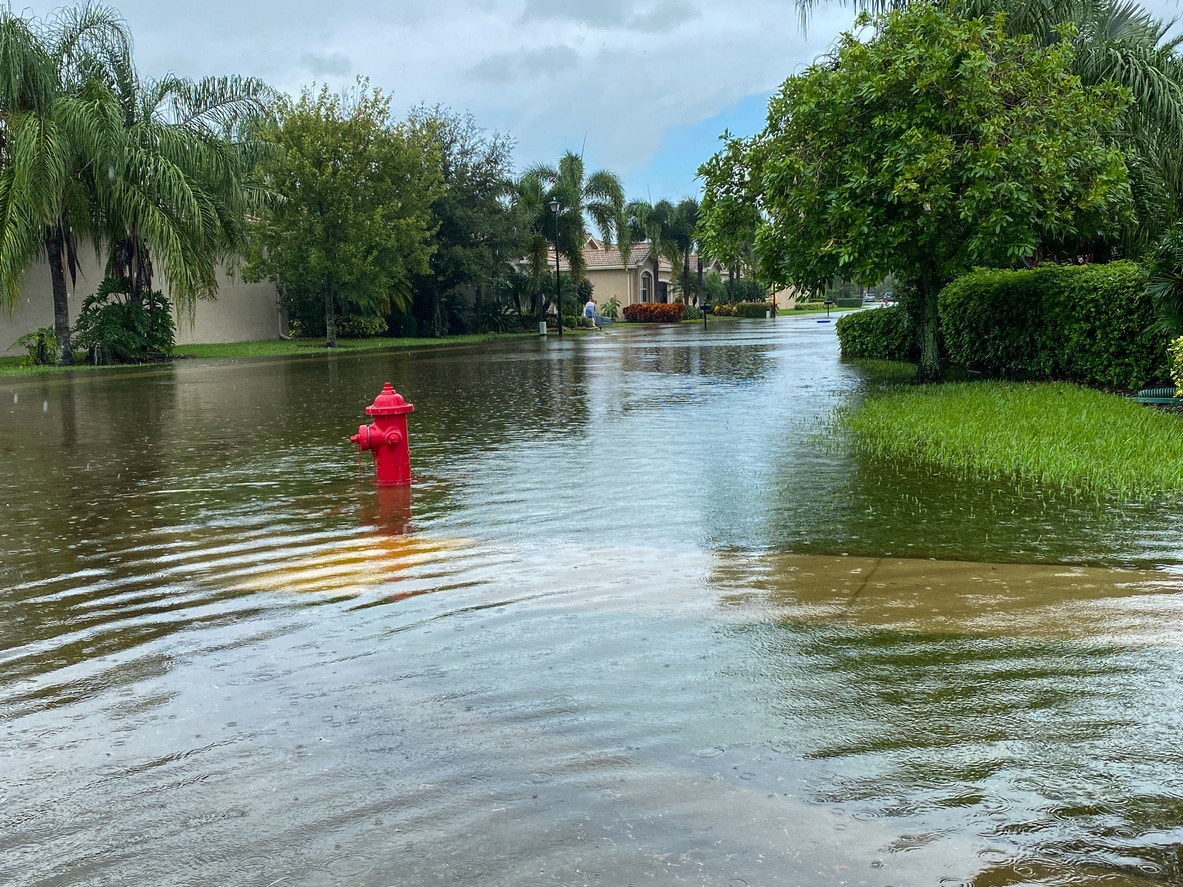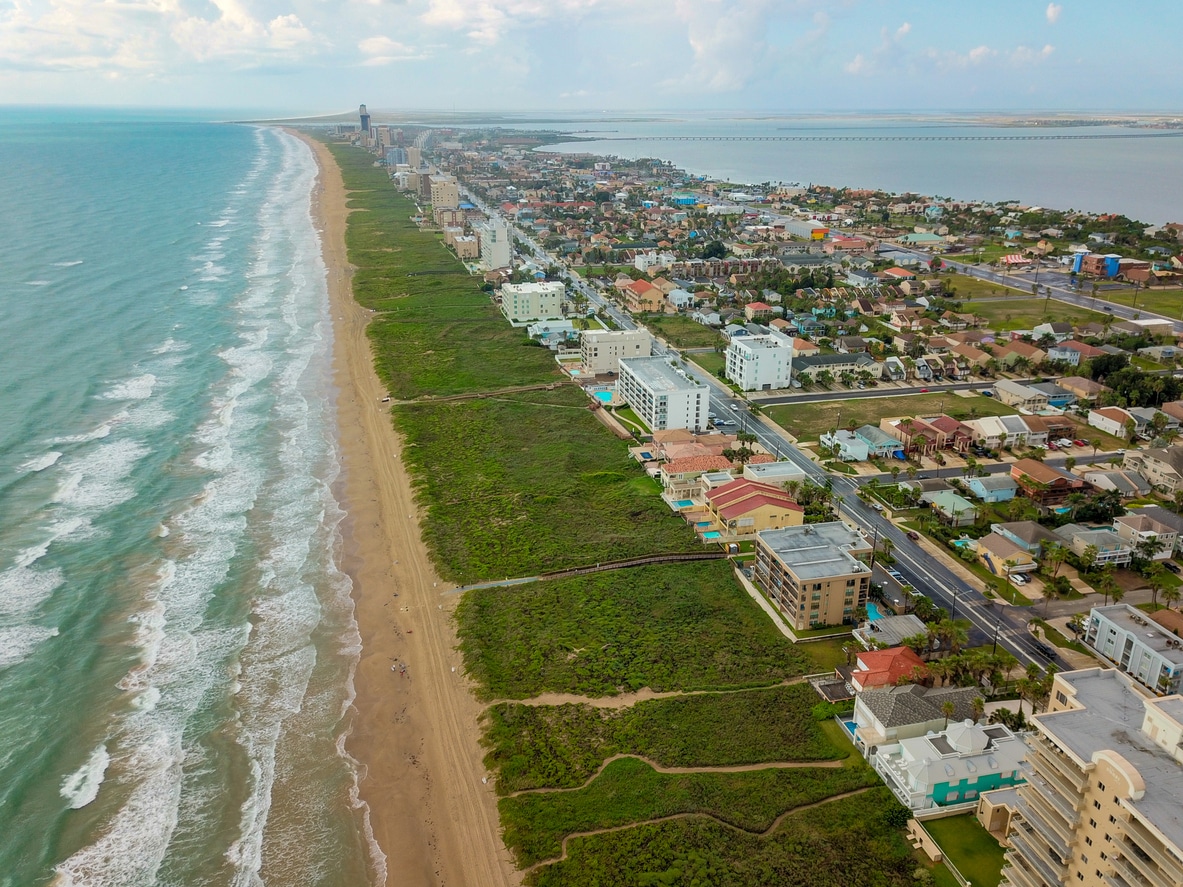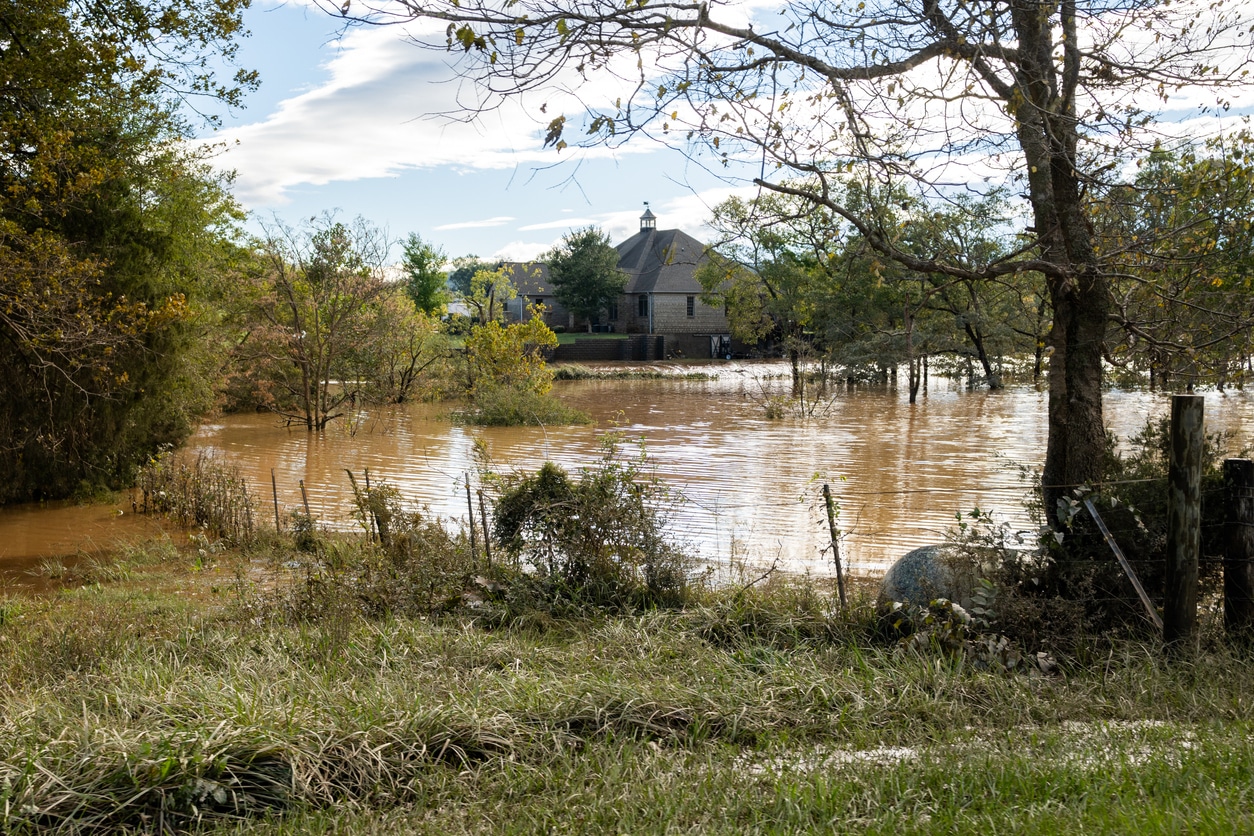Search Blogs

October 21, 2024
Car Insurance Price Increases Are Slowing, Offering Drivers a Break

October 21, 2024
USG Announces Hire of Tiffany Francis in Alpine, CA
 Francis entered the insurance industry eight years ago, and since then, she has developed expertise in managing multiple portfolios, including new business and renewals. She has built a reputation for fostering strong client relationships, which has been a cornerstone of her continued success in the industry.
This move is the most recent change that USG has implemented in its plan to continue expanding its operations nationally as a leading wholesaler brokerage firm.
ABOUT USG:
USG is a national wholesale broker and managing general agent (MGA) with offices throughout the country. USG represents 400+ A rated carriers, both admitted and non-admitted and is an MGA for 14 carriers, writing business in all states. USG's mission is to become the #1 provider of innovative solutions for the risk management industry--exceeding expectations with its advanced technology, creative problem solving, and research capabilities.
CONTACT INFORMATION:
TIFFANY FRANCIS
Associate Producer/Broker: Garage Division
d: 949.238.6538
e: tfrancis@usgins.com
Francis entered the insurance industry eight years ago, and since then, she has developed expertise in managing multiple portfolios, including new business and renewals. She has built a reputation for fostering strong client relationships, which has been a cornerstone of her continued success in the industry.
This move is the most recent change that USG has implemented in its plan to continue expanding its operations nationally as a leading wholesaler brokerage firm.
ABOUT USG:
USG is a national wholesale broker and managing general agent (MGA) with offices throughout the country. USG represents 400+ A rated carriers, both admitted and non-admitted and is an MGA for 14 carriers, writing business in all states. USG's mission is to become the #1 provider of innovative solutions for the risk management industry--exceeding expectations with its advanced technology, creative problem solving, and research capabilities.
CONTACT INFORMATION:
TIFFANY FRANCIS
Associate Producer/Broker: Garage Division
d: 949.238.6538
e: tfrancis@usgins.com 
October 21, 2024
USDA Orders Recall of Nearly 12 Million Pounds of Meat and Poultry Over Listeria Contamination Risk

October 18, 2024
Chatham Insurance Services Launches New Excess of Loss Program
- HMO Reinsurance
- Medical Excess Reinsurance
- Provider Excess of Loss, including the following:
- Accountable Care Organization Reach (“ACO Reach”); and
- Kidney Care Choices (“KCC”)

October 18, 2024
USQRisk Taps Industry Veteran Sam Kramer as CEO Of Desq, Its Incubator/Accelerator Platform
USQRisk, the international managing general agent specializing in alternative risk transfer and unique risk solutions, has named Sam Kramer to serve as CEO of its incubator/accelerator platform, Desq. Kramer, an industry veteran with expertise in reinsurance, alternative risk management and M&A advisory, will lead Desq as it continues to support the growing specialty insurance by bringing new MGAs to market.
“After the successful launch of Desq’s first MGA, Pera, last year, Desq has demonstrated that it can successfully launch new insurance solutions. Desq provides aspiring entrepreneurs with the resources and expertise needed to introduce a specialty MGA to market thoughtfully, efficiently and quickly,” said Anibal Moreno, CEO of USQRisk. “To continue growing Desq, we identified a leader who not only has the industry and management expertise to drive the program forward, but who can also navigate the sea of complexities related to bringing a new MGA to market. We are thrilled that Sam is coming on board to work with our MGA partners and help us continue to fuel Desq’s expansion efforts.”
Aside from growing Desq and expanding the number of MGAs Desq brings to market, Kramer will provide ongoing support for the underwriting teams (programs) enrolled in the Desq platform to ensure that each receives the individual focus they need to grow within the Desq environment. Support will include partnering with (re)insurers and vendors, closing operating gaps, developing new relationships with industry experts and more.
“Desq’s unique value propositions create an exciting opportunity in the industry, unlocking doors for MGAs that are seeking to solve some of the most complex problems present in underwriting and risk management,” said Kramer. “I am excited to leverage USQRisk’s underwriting capabilities, data resources and operating efficiencies as we support talented underwriters in their quest to build high quality MGA businesses for the benefit of all stakeholders.”
Prior to joining Desq, Kramer held a number of leadership positions including Vice President, Reinsurance at Corvus Insurance, Senior Vice President at Houlihan Lokey, and Vice President, Strategic Development, Mergers & Acquisitions at AmTrust Financial Services.
About USQRisk
USQRisk focuses on customized risk management solutions to help clients manage volatility and overcome the shortcomings of traditional risk transfer solutions. Leveraging the company’s combined 250+ years of underwriting and risk management expertise in senior roles at major insurers and brokers like Allianz, Zurich, Chubb, Aon and Marsh, USQRisk provides nimble solutions to meet the needs of real-world problems. For more information visit https://www.usqrisk.com/
About Desq
Desq is a specialty accelerator platform established to empower entrepreneurial underwriters to launch and manage their own MGAs. By leveraging technology and tailoring it to the needs of underwriters, Desq seeks to inspire specialty underwriters to build on their expertise and harness the opportunity to start their own MGAs. For more information about Desq, visit www.desquw.com.

October 18, 2024
Six Community Projects Enhancing Disaster Resilience
1. Harris County, Texas: Flood Mitigation
Flooding is a persistent issue in Harris County, Texas, particularly in the Vince Bayou Watershed, a low-lying area frequently impacted by storms. To address this, a $15 million bond-funded project has been launched. The plan aims to improve stormwater detention and channel conveyance systems to mitigate flood risks and enhance resilience to hurricanes. Four construction options are under review, with costs estimated between $11 million and $24 million, and work is set to begin in 2025.2. Crisfield, Maryland: Tidal Flood Protection
Crisfield, Maryland, is undertaking a $36 million federally funded flood mitigation project aimed at tackling the twin threats of tidal waves and storm surges. Measures include constructing a tidal barrier, upgrading internal drainage systems, elevating roads, and restoring wetlands to act as natural water storage areas. These upgrades will provide initial protection from 3.5-foot storm surges, with capabilities to expand in the future.3. New Hampshire: Coastal Roadway Resilience
A $20.26 million effort in New Hampshire will focus on reconstructing seawalls and revetments along 3.2 miles of coastal roadway between North Hampton and Rye. The initiative is critical for ensuring that the area remains accessible during extreme weather events. Currently in the design phase, the project aims to improve the resilience of this key transportation artery, with construction expected to start in 2025.4. Mississippi: Floodplain Restoration
Mississippi is embracing natural infrastructure solutions with a $20.19 million project to restore 1,516 acres of wetlands and riparian forests in the Mississippi River floodplain. The initiative will protect vital infrastructure, including highways I-40 and I-55, two freight rail lines, and a pedestrian bridge. Expected to begin construction in 2025, the project aims to reduce flooding, prevent erosion, and enhance ecosystem health.5. Delaware: Bridge Resilience Project
In Townsend, Delaware, a $23 million project is planned to replace Taylors Bridge, which currently struggles with frequent flooding. This upgrade will raise the bridge to accommodate rising sea levels, reduce the number of bridge piers to improve water flow, and add structural reinforcements. Set for construction in 2025, the project aims to make the bridge more resilient against sea-level rise and frequent storm surges.6. California: Seismic Bridge Upgrade
Val Verde, California, is preparing for earthquakes with a $7.5 million project to upgrade a key bridge. This structure does not currently meet seismic safety standards, putting the community at risk of collapse during an earthquake. Planned upgrades include installing reinforced foundation structures to meet safety standards, with construction expected in 2025.Preparing for the Future
These projects reflect a growing awareness of the need for enhanced disaster preparedness and resilience. As climate change continues to pose significant challenges, more communities are investing in infrastructure upgrades to ensure that they can withstand future disasters. The demand for companies offering disaster relief services is expected to grow significantly in the coming years. Is your community prepared for extreme weather events? If not, it might be time to advocate for local resilience projects to ensure a safer future for everyone.
October 17, 2024
Florida’s Real Estate Boom in High-Risk Flood Zones Puts Insurers, Lenders on Collision Course
Rising Insurance Costs Following Natural Disasters
The surge in construction is driving tension between real estate developers, insurers, and lenders. As new homes go up in vulnerable areas, insurance claims skyrocket. Insured losses from Helene and Milton are projected to reach between $40 billion and $75 billion, according to Morningstar DBRS. These massive payouts are leading insurers to hike premiums and pull back on coverage, putting pressure on homeowners and businesses alike.National Trends Mirror Florida’s Challenges
Florida isn’t the only state facing these risks. Since 2019, 290,000 homes have been built in high-risk flood zones across the U.S., representing nearly one in five new properties. Texas, California, and North Carolina have also seen significant construction in flood-prone areas, further amplifying concerns within the insurance industry.Developers Build Just Outside Official Flood Zones
One alarming factor is that many new homes are being built just outside of FEMA-designated flood zones. These areas, while still at high risk for flooding, are not subject to the same insurance and construction requirements. First Street Foundation found that more than half of Florida’s high-risk properties fall outside of FEMA’s official flood zones, leaving homeowners vulnerable without mandatory flood insurance or tougher building codes.Insurers Struggle with Mounting Losses
The insurance industry is already facing significant financial strain. Home insurers have reported more than $32 billion in underwriting losses over the last four years, leading to premium increases that show no signs of slowing down. Morningstar warns that rates “have nowhere to go but up” as insurers attempt to recoup their losses from natural disasters.Lenders, Developers Urged to Take Responsibility
Experts say the real estate and lending sectors need to take a more active role in assessing long-term risks. Robert Gordon of the American Property Casualty Insurance Association points out that while lenders are financially tied to properties for decades, insurers have the flexibility to adjust rates every six to 12 months. He argues that lenders are in the best position to ensure the long-term risks are being properly considered, but often this isn’t happening.Calls for Updated Building Codes
Some industry leaders are calling for stricter building regulations in response to increasing risks. Trevor Burgess, CEO of Neptune Flood, suggests raising construction standards in flood-prone areas, even those outside official flood zones. Burgess, who evacuated from his home in St. Petersburg ahead of Milton, notes that sea levels in the area have risen nearly a foot since he was born.The Future of Real Estate in High-Risk Areas
As climate change accelerates, the real estate industry must adapt to growing risks. Developers, insurers, and lenders are now at a crossroads. Without stronger regulations and more accurate flood maps, the gap between risk and protection will continue to widen, leaving homeowners exposed and insurers scrambling to cover the costs of an increasingly volatile landscape.
October 17, 2024
Montana’s Wildfire Investment Pays Off Amid Rising Insurance Concerns
Advanced Fire Detection Technology
A key part of this investment is the deployment of advanced technology. This fire season, Montana utilized an airplane equipped with a high-resolution thermal camera to detect fires ignited by lightning. The plane’s ability to spot fires at night before they grew allowed ground crews to act swiftly. "This is one of those opportunities that would not have been available to us were it not for the additional resources created through House Bill 883,” Frampton said.Mitigation Projects Expand
This proactive approach is helping Montana manage wildfire risks more effectively. Of the more than 2,000 fires reported this season, 95% were contained at under 300 acres, aided by local volunteer firefighters. These successes come as Montana faces rising firefighting expenditures, totaling $33.6 million so far this year, with a significant portion of the remaining $123.8 million in the state's fire suppression fund still intact. Despite these efforts, the risk of wildfire destruction remains high. The DNRC is actively working on 150 mitigation projects to reduce fire risks, including a large-scale effort in the Butte municipal watershed. With the additional federal funding of $80 million, Montana aims to address what DNRC director Amanda Kaster describes as a “forest health crisis” spanning 9 million acres.Insurance Costs Rise
However, the increasing frequency of wildfires, especially in high-risk areas, is straining homeowners and insurance providers. As more expensive homes are built in wildfire-prone zones, insurance rates are skyrocketing. According to Lyn Elliott, vice president of state government relations for the American Property Casualty Insurance Association, insurance costs have doubled in the last decade for homes in high-risk areas. The rising cost of materials, labor, and rebuilding homes has further exacerbated the situation.Homeowners Face Challenges
Insurance agents are facing a "crisis" as some homeowners are dropped by their insurers due to wildfire exposure, while others are forced to raise deductibles or reduce their coverage to afford premiums. With Montana having the highest percentage of properties at high to extreme wildfire risk in the nation, there is a growing call for stronger building regulations. Patty Hernandez, executive director of Headwaters Economics, emphasized the need for fire-resistant construction standards to reduce long-term costs and prevent future losses.Policy Solutions Needed
Montana’s wildfire response, while significantly improved, highlights the broader challenge of protecting homes in fire-prone areas and managing rising insurance costs. Legislators are urged to consider policies that promote fire-resistant construction to safeguard both homes and insurance affordability in the face of increasing wildfire risks.
October 17, 2024
Small Business Disaster Loan Program Halts as Funding Dries Up
Funding Crisis Leaves Many Waiting for Relief
The SBA had warned earlier this month that its disaster loan program might run out of money, given the scale of the damage caused by Helene. Congress has yet to approve new funds, delaying the much-needed relief for applicants. While the SBA remains a crucial source of financial support during recovery, the current halt has left small businesses in limbo. Despite this setback, other forms of assistance are still available. The Federal Emergency Management Agency (FEMA), which provides grants and temporary housing assistance, is not impacted by the SBA’s funding shortfall. However, SBA loans typically offer more long-term financial support for rebuilding efforts.Urgency Grows for Congressional Action
Both Hurricanes Helene and Milton left a path of devastation across Florida and neighboring states. Helene, a Category 4 storm, flooded communities, destroyed infrastructure, and displaced thousands of people. Milton’s arrival compounded the recovery challenges, hitting many of the same areas already grappling with Helene’s aftermath. For many small businesses, disaster loans are a vital lifeline for recovery. Without access to this funding, businesses are unable to rebuild, reopen, or cover ongoing expenses. Advocacy groups are urging Congress to act quickly to allocate new funds to the SBA to ensure businesses can begin the recovery process. Until Congress moves to replenish the SBA’s disaster loan funds, thousands of applications will remain in limbo, leaving storm-ravaged communities across the Gulf Coast struggling to recover.Insurance Industry Implications
- Business Interruption Insurance: With the SBA's disaster loan program depleted, many small businesses may turn to their insurance policies for support. Business Interruption Insurance, in particular, will be critical for companies needing to cover operational expenses and lost income while rebuilding after hurricanes.
- Supplementary Insurance Products: The funding shortfall highlights a potential gap in financial recovery options for businesses after natural disasters. Insurers can address this gap by offering specialized products that complement government aid.
- Quick Claims Processing and Support: With SBA funding on hold, insurance companies will likely face additional pressure to expedite claims processing. When public assistance becomes delayed, the spotlight often falls on private insurers to fill the gap.

October 16, 2024
Texas Rejects Coastal Insurance Rate Hike
Insurance Commissioner Halts Proposed Rate Hike
On Monday, Texas Insurance Commissioner Cassie Brown denied the Texas Windstorm Insurance Association's (TWIA) request to raise insurance rates for coastal properties by 10%. The TWIA, the state’s insurer of last resort for Gulf Coast residents and businesses, had argued the increase was necessary to cover growing repair costs and to sustain coverage for a rising number of policyholders. Brown, however, disagreed, stating that such an increase would be “unjust and unfair” due to the financial strain it would place on already struggling coastal property owners. She noted that local school districts, business groups, and property owners had voiced concerns during public hearings about the potential unaffordability of the rate hike.Coastal Communities Celebrate Victory
State Representative Todd Hunter, a vocal opponent of the proposed rate hike, celebrated the decision, calling it a victory for the coastal communities. “The coast won,” Hunter said in a social media post following the announcement. Texas homeowners are no strangers to rising insurance premiums. According to an S&P Global analysis, insurance rates in Texas saw a sharp 23% increase last year—outpacing every other state. Much of this rise is attributed to extreme weather events like hurricanes and tornadoes, which have inflicted significant damage on homes and businesses along the coast.TWIA's Argument for More Revenue Falls Short
The TWIA, which insures properties in 14 coastal counties and parts of Harris County, argued the 10% rate increase was necessary to replenish funds following substantial payouts from recent storms, including Hurricane Beryl. The storm, which caused an estimated $2.5 billion in damages, has already led to TWIA paying out nearly $259 million in claims. TWIA's officials also noted that the increasing cost of construction and labor to repair storm damage had contributed to the need for additional revenue. Still, the association admitted that even a 10% increase wouldn’t fully cover these rising costs. Despite this, Commissioner Brown stood firm in her rejection, stating that an increase would only add to the financial burden coastal residents and businesses are already facing.Legislative Action on the Horizon
The battle over rising insurance costs is far from over. Texas lawmakers, including Lt. Gov. Dan Patrick and House Speaker Dade Phelan, have indicated that addressing the state’s skyrocketing insurance rates will be a top priority when the legislature reconvenes in Austin next year. Brown expressed optimism that a long-term solution could be developed through legislative action. Aaron Taylor, TWIA’s senior legislative and external affairs specialist, emphasized the need for collaboration moving forward. “We look forward to working with lawmakers to address these important issues to ensure that TWIA has the financial capacity to pay claims for our policyholders when they need us,” he said. For now, coastal homeowners and businesses can breathe a sigh of relief, but the issue of rising insurance costs in Texas remains a pressing concern. With lawmakers set to revisit the topic in the near future, the conversation around fair and affordable insurance for coastal residents is far from over.
October 16, 2024














